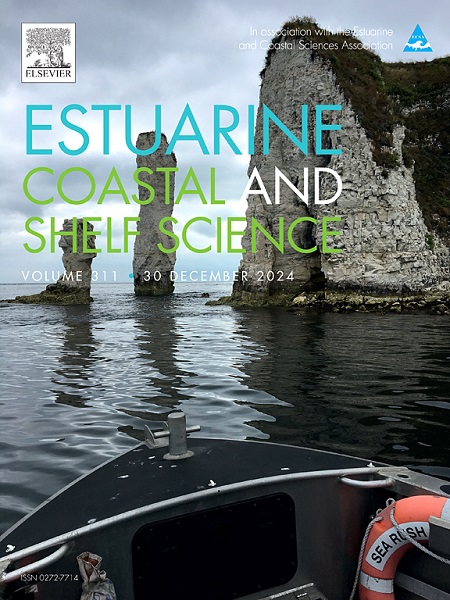Predator-prey interaction between a native octopus and an invasive crab: Habitat and size dependent effects on consumption and behaviour
IF 2.6
3区 地球科学
Q1 MARINE & FRESHWATER BIOLOGY
引用次数: 0
Abstract
The potential benefits of invasive species on native predators have received little attention. We propose that Octopus tehuelchus, a native predator on Patagonian coasts, may find a novel food source in the invasive Carcinus maenas. Thus, we assess ecological and behavioural aspects of the predator-prey interactions under controlled conditions. Two sizes of octopus and crab, and two substrate types were used to determine their effects on consumption of Carcinus by Octopus. Large octopuses consumed more crabs irrespective of substrate type, and more crabs were consumed on hard than sandy substrate. Both small and large octopuses consumed a larger proportion of small crabs. A size refuge for crabs from large octopuses was found at 70 mm carapace width. Octopuses’ time to first attack, number of approaches and number of attacks did not differ with prey size. Defensive responses by prey were greater in smaller sized crabs and the largest tested crabs (80–85 mm) were the only ones to attempt attacks on octopuses. Together, our results suggest less vulnerability of C. maenas to octopus predation on sandy substrates where crabs bury themselves. However, it may be a novel food resource for O. tehuelchus particularly on hard substrates. Octopus predation may result in a reduction of green crab populations in areas of high octopus density with cascading effects on the diverse invertebrate community affected by C. maenas. Our study is a valuable contribution to the ecology of biological invasions, showing that exotic species can become an abundant food resource potentially benefiting predator populations.

求助全文
约1分钟内获得全文
求助全文
来源期刊
CiteScore
5.60
自引率
7.10%
发文量
374
审稿时长
9 months
期刊介绍:
Estuarine, Coastal and Shelf Science is an international multidisciplinary journal devoted to the analysis of saline water phenomena ranging from the outer edge of the continental shelf to the upper limits of the tidal zone. The journal provides a unique forum, unifying the multidisciplinary approaches to the study of the oceanography of estuaries, coastal zones, and continental shelf seas. It features original research papers, review papers and short communications treating such disciplines as zoology, botany, geology, sedimentology, physical oceanography.

 求助内容:
求助内容: 应助结果提醒方式:
应助结果提醒方式:


